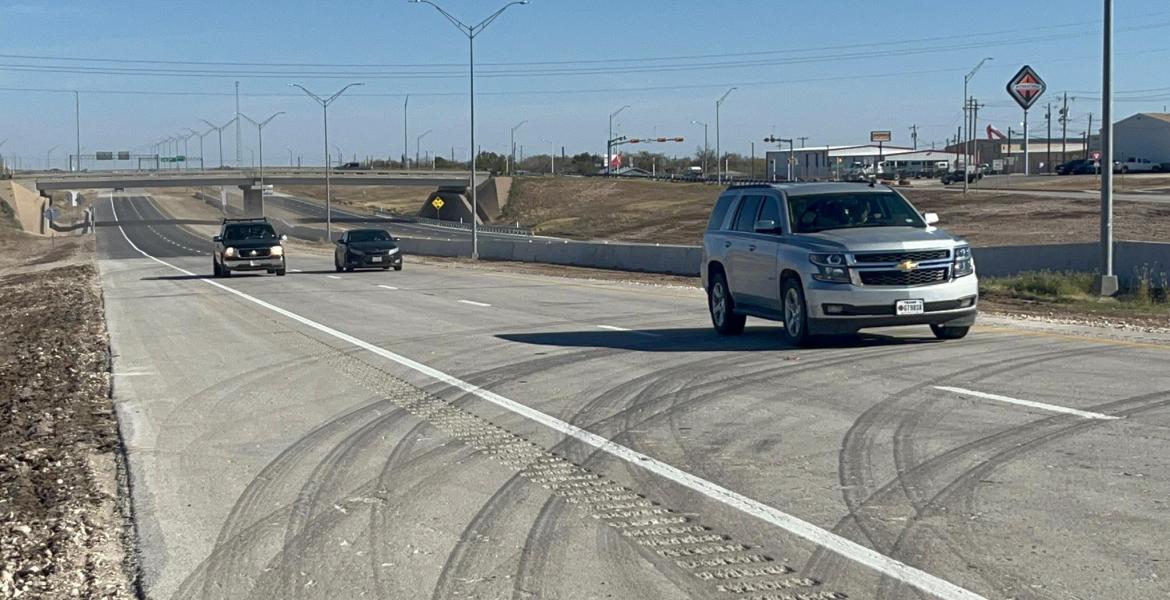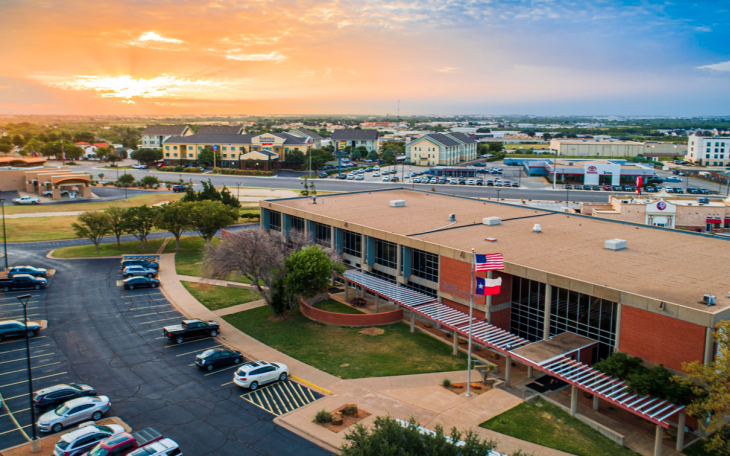As hospice nurse Pam Murphy checks her patient’s blood pressure, she giggles at his joke. They talk about what would seem like little things to another, but the patient’s eyes shine with excitement. The conversation jumps from talk of medication, to breakfast, and to the patient’s late wife. Sure, Murphy may be there to check to see if the patient has been taking his medicine and keeping a healthy diet, but her duties as a hospice nurse go much further than that.
I had the privilege of shadowing Murphy as she visited patients and tended to their needs at Hospice of San Angelo.
“I like to chit chat with her,” the patient said. “She does a good job. She talks to me and she takes my blood pressure and asks me if I have any pain, which I don’t—yet. Maybe someday, it’ll show up. But we have fun.”
Hospice’s Role
After our visit with Murphy’s first patient of the day, Murphy spoke at an informational session at Rio Concho West for preparing for aging and dying.
“One of the things that I discovered about seven years ago, when my mom was diagnosed with liver cancer, is that none of us are mortal,” Murphy said. “At the time, I was a paralegal. They started talking to me about all these medical conditions and terms, and I didn’t know what they were talking about; so, I went to nursing school. I graduated two months after I lost her. But I knew then that hospice was where I wanted to be.”
Hospice of San Angelo’s (HOSA) role in the community is to provide comfort and medical assistance to individuals with life-limiting illnesses. The families of these individuals are under hospice’s care as well; each family member is welcome to hospice’s counseling and bereavement services. Murphy said that hospice’s services are available as long as the family needs them.
“My mom was only 68 [when she passed away], and she was my best friend,” Murphy said. “My life changed tremendously from that day forward. I needed more [time] and [hospice] never stopped contacting me when they knew I needed it; [they] provided so much for me and helped me so much. They don’t just walk away.”
Murphy said that there is a misconception among the public that hospice is “just a death sentence.”
“All of you are going to, at some point, deal with end of life," Murphy said. “And whether it’s for you, or your family, or your mom or your kids, all of us will, at some point, deal with end of life. Hospice is about caring for you and your family. It’s a whole family journey, and we join you all along the way.
HOSA is a non-profit organization that is funded by donations from the community. Medicare or supplemental insurance often pay for patients’ medical bills; however, if that does not cover the cost, hospice provides medical care and medication free of charge.
Medical Assistance and Quality of Life
Patients are generally referred to hospice by doctors when they diagnose that the patient has six months or less to live. While HOSA’s focus in not to cure these patients, according to Murphy, they strive to provide them with quality of life.
“The whole concept is that you die, pass onto this next life and into the arms of Jesus,” Murphy said. “We have counselors; we have chaplains; we have bereavement; we have all these people [who] volunteer that can come in and help your family along that journey.”
Murphy said patients have often lived more than six months under hospice’s care despite the doctor’s diagnosis. Hospice is also willing to care for patients much longer than the six-month period. Furthermore, many individuals, whose conditions have improved with help from HOSA, choose to take a break from their services; when their health worsens again, they are welcome to return to hospice.
Hospice also assists doctors in managing prescriptions for those involved in the program. HOSA’s medical director oversees all of the medical procedures and medications that the patients receive.
“Oftentimes, when you come to us, there’s not five doctors giving you meds; there’s one who’s looking at everything and how it reacts together," Murphy said. “[Oftentimes], people come in and we’re like, ‘You don’t need that. It’s causing this,’ or, ‘This reacts with this, and it’s making you worse.’”
The program is constant communication with doctors on what is best for the patients. Doctors are often busy with a multitude of patients, so HOSA’s staff helps to share the load among a larger group of medical professionals. Furthermore, the staff is in constant communication about the needs of their patients.
“We meet every other Thursday, and we talk about every one of our patients; and, we pray over every one,” Murphy said.
Long-Term Care
While HOSA does work with patients in their homes, many families chooses to place the ill or elderly individual into a long-term care facility. Hospice is willing to serve patients in these facilities as well.
“Hospice does go into these long-term care facilities and works with staff there, ensuring that the staff is following the guidelines of the doctors and that you are cared for,” Murphy said. “It’s our job to make sure you are cared for and your loved one is cared for just like you would be at home.”
According to Murphy, a long-term facility often costs approximately $4,000 to $6,000 a month out of pocket. She said that long-term care health insurance often is not as effective as it is advertised, and encouraged the public to check the insurance plans with a professional.
“Have that plan checked out from beginning to end with an investment attorney, or investment group, because so many times, those [insurance policies] are not real and all of you guys are taken advantage of,” Murphy said. “Hospice of San Angelo has social workers [who], if you’re interested, we can hook you up with people [who] can give you that information, who can look over your benefit.”
Murphy called this practice of misleading long-term care health insurance "elder abuse." She also said that elder abuse happens most often in long-term care facilities. Luckily, families have the option to authorize hospice to visit these long-term facilities; HOSA can then make sure that the patient is being cared for and speak on their behalf.
Murphy, however, was adamant that many long-term facilities are safe and healthy places for the elderly.
“But it’s always nice to have someone like hospice there to speak for you,” Murphy added.
The End
HOSA covers 15 counties and employs medical professionals of many kinds, from nurses to doctors. The program recently celebrated its 30th anniversary.
“You would think that the hardest part of my job is the end,” Murphy said. “But the best part of my job is watching families have quality of life without all this medication, and all this strife, and all this heaviness that sits on them. You get to go to heaven. And there’s nothing better than that. The best part of my job is getting to walk you there. And you get to go meet my mom…I would do anything to be there.”
After Murphy and I left Rio Concho West, we visited one more patient. This patient was frailer than the last; rather than swapping jokes, Pam mostly just talked to this lady without getting much of a response. According to Murphy, this patient had cared for her when she was a little girl.
“I love you,” Murphy told her. “Because you’re beautiful. You used to change my diapers and love on me. Now I get to love on you.”
Subscribe to the LIVE! Daily
Required






Comments
Listed By: Tanis Price
I loved the article on Hospice. Pam is a caring person and is compassionate in all she does. Thank you, Pam, for making life easier when life is at it's hardest.
- Log in or register to post comments
PermalinkListed By: S.A. TX RN
"They won’t feed you; they won’t change you; they won’t come in there unless you can pull that string, and then it will take 30 minute to an hour for them to come see you,” Hogwash!! First off, not all facilities are created equally. It pays to shop around. Secondly, I'm glad not all hospice services have this attitude & I was free to use a better one for my Dad who died at home, & Mom, who had to reside in a facility, & received nothing but top-notch care. The hospice nurses that took care of my parents were amazing!! Thankfully, no one tried to impose their views on religion, & heaven on my Dad. The best hospice nurses deal with what's real life for the patient, whether that's a unique family situation, long term care, non mainstream religions, or other specialty circumstances. Thankfully, there are several hospice providers in San Angelo. And, as mentioned, it definitely pays to shop around.
- Log in or register to post comments
PermalinkListed By: Samantha Miller
The criteria for hospice is a "reasonable" prognosis of six months or less if the disease is allowed to proceed along its natural course. As long as you meet criteria and show continued decline, you are eligible for hospice no matter how much time you have left. It has nothing to do with hospice being willing to care for them beyond six months, it is medicare law.
- Log in or register to post comments
PermalinkPost a comment to this article here: